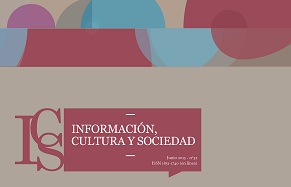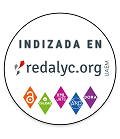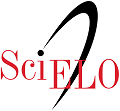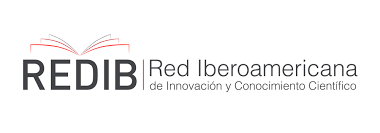Uses of the Calls for Papers in Colombian Scientific Journals
Abstract
It cannot be denied that the call for papers (CFP), used in a systematic way by the ‘predatory’ journals, are important for journals of excellence and second-class ones that turn to these announcements for their regular, themed and commemoratives editions. In this article we show the results of a survey carried out in 2016 to 199 editors of Colombian scientific journals of areas such as Natural Science, Engineering and Technology, Medical Sciences, Agricultural Sciences, Humanities, and Multidisciplinary Sciences. The 75% (143) of the studied journals have a biannual regularity. 37.7% (53) of the editors usually use the CFP announcements to call for articles for their regular editions. 30% (114) of the editors use the journal’s web page to issue their CFP announcements and 29.5% (111) use the e-mail. Nonetheless, 66 editors could not answer how effective were these announcements to draw articles, because they could not define the percentage of the material received that was finally published.Downloads
References
Allen Institute for Artificial Intelligence. 2007. WikiCFP. Obtenido de A Wiki for Call For Papers. <http://www.wikicfp.com/> [Consulta: 25 septiembre 2016].
Ariyam, Derick y Michael Becker. 2011. CFPList. Obtenido de CFPList: <https://www.cfplist.com> [Consulta: 25 septiembre 2016].
Baiget, Tomás y Daniel Torres-Salinas. 2013. Informe Apei sobre Publicación en revistas científicas. Gijón: Asociación Profesional de Especialistas en Información.
Beall, Jeffrey. 2012. Predatory publishers are corrupting open access. En Nature. Vol. 489, no. 7415, 179.
Beall, Jeffrey. 2017. What I learned from predatory publishers. En Biochemia Medica. Vol. 27, no. 2, 273–8.
Bhatia, Vijay. 2000. Genres in Conflict. En Trosborg, A., comp. Analysing Professional Genres. Amsterdam: John Benjamins.
Clasificación Integrada de Revistas Científicas – CIRC. 2016. EC3Metrics. <https://clasificacioncirc.es/clasificacion-circ#c4> [Consulta: 5 septiembre 2016].
Comunicar. Revista Científica Iberoamericana de Comunicación y Educación. 2016. <http://www.revistacomunicar.com/index.php?contenido=proximos> [Consulta: 25 octubre 2016].
Delgado, E.; P. Ruiz y C. Jiménez. (2006). La Edición de revistas científicas: Directrices, criterios y modelos de evaluación. Granada: Fundación Española para la Ciencia y la Tecnología.
Departamento Administrativo de Ciencia, Tecnología e Innovación - Colciencias. 2014. Índice Bibliográfico Nacional - IBN Publindex II Actualización 2014. Bogotá: Dirección de fomento a la investigación. <http://scienti.colciencias.gov.co:8084/publindex/download.file?tpoArchivo=IBN&corrida=17> [Consulta: 5 agosto 2016].
Departamento Administrativo de Ciencia, Tecnología e Innovación - Colciencias. 2016. Política nacional para mejorar el impacto de las publicaciones científicas nacionales. Versión final Documento 1601. Bogotá: Dirección de fomento a la investigación.
Fonseca-Mora, Carmen e Ignacio Aguaded. 2014. Las revistas científicas como plataformas para publicar la investigación de excelencia en educación: estrategias para atracción de investigadores. En RELIEVE. Vol. 20, no. 2, art. M3.
Hernández, Roberto; Carlos Fernández y Pilar Baptista. 2014. Metodología de la investigación. México: McGraw-Hill Interamericana.
Índice Bibliográfico Nacional - IBN Publindex. 2014. Publindex. <http://publindex.colciencias.gov.co:8084/publindex/EnIbnPublindex/resultados.do# > [Consulta: 26 octubre 2016].
Kozak, Marcin; Olesia Iefremova y James Hartley. 2015. Spamming in scholarly publishing: A case study. En Journal of the Association for Information Science and Technology. Vol. 7, no. 8, 2009–2015.
Mendoza, Sara y Tatiana Paravic. 2006. Origen, clasificación y desafíos de las revistas científicas. En Investigación y Postgrado. Vol. 21, no. 1, 49–75.
Mercado, Heiner. 2015. Métricas fraudulentas y las revistas iberoamericanas. Entrevista a Rafael Repiso. En Blog Jasolutions. <http://jasolutions.com.co/calidad-editorial/metricas-fraudulentas-y-las-revistas-iberoamericanas-entrevista-a-rafael-repiso/> [Consulta: 6 octubre 2016].
Moher, David y Anubhav Srivastava. 2015. You are invited to submit… En BMC Medicine. No. 13, 180.
Moya, Misael. 2003. Categorías de trabajo en edición de textos: breve experiencia con publicaciones. En Revista ISLAS. Vol. 45, no. 135, 27–48.
Observatorio Colombiano de Ciencia y Tecnología. 2014. Indicadores de Ciencia y Tecnología, Colombia. Bogotá: OCYT.
Organización para la Cooperación y el Desarrollo Económicos. 2003.
Manual de Frascati. Propuesta de Norma Práctica para Encuestas de Investigación y Desarrollo Experimental. Madrid: Fundación Española para la Ciencia y la Tecnología (FECYT).
ProQuest. 2016. Papers Invited. <http://www.papersinvited.com/> [Consulta: 10 octubre 2016].
Quintero Barrizonte, Jorge; Alex García Pérez y Geidy Medina Ruíz. 2014. Plan de Marketing para la Revista “Universidad y Sociedad”. En Universidad y Sociedad. Vol. 6, no. 3, 20–25.
Richards, G. 2011. CFPworld. CFPList. <http://www.callforpapers.biz/index.html> [Consulta: 25 septiembre 2016].
Rodríguez, Esmeralda; Sandra Naranjo y Dory González. 2015. Publindex: más que un proceso de indexación. En El Ágora USB. Vol 15, no. 1, 29–41.
Ruiz-Pérez, Rafael; Emilio López-Cózar y Evaristo Jiménez-Contreras. 2006. Criterios del Institute for Scientific Information para la selección de revistas científicas. Su aplicación a las revistas españolas: metodología e indicadores. En International Journal of Clinical and Health. Vol. 6, no. 2, 401–424.
Salager-Meyer, Françoise. 2008. Scientific publishing in developing countries: Challenges for the future. En Journal of English for Academic Purposes. Vol. 7, no. 2, 121–132.
Shen, Cenyu y Bo-Christer Björk. 2015. ‘Predatory’ open access: a longitudinal study of article volumes and market characteristics. En BCM Medicine. No. 13, 230.
Swales, John. 2004. Genre analysis: English in academic and research settings. Cambridge: Cambridge University Press.
Torres-Salinas, Daniel y Álvaro Cabezas-Clavijo. 2013. Cómo publicar en revistas científicas de impacto: consejos y reglas sobre publicación científica. EC3 Working Paper no. 13.
Yang, Wenhsien. 2013. Two-folded messages behind CFP: A cross disciplinary study. En International Journal of Language Studies. Vol. 7, no. 2, 83–108.
Yang, Wenhsien. 2015. “Call for papers”: Analysis of the schematic structure and lexico-grammar of CFPs for academic conferences. En English for Specific Purposes. Vol. 37, 39–51.
Authors publishing in this journal acknowledge the conditions below:
- Authors retain the copyright of their work while they transfer the right of the first publishing to the journal, under the Creative Commons Attribution-ShareAlike 4.0 International (CC BY-SA 4.0) Licence, which allows third parties to reproduce them under the condition that express mention is given to the author and to its original publication in the journal.
- Authors may enter into other contractual and independent arrangements for the non-exclusive distribution of the version of the article published in this journal (for instance, it can be published in an institutional repository or in a book). In any case, an express mention should be given to its first publication in the journal.
- It is permitted and encouraged to publish online the articles (for example, on institutional or personal pages).


























